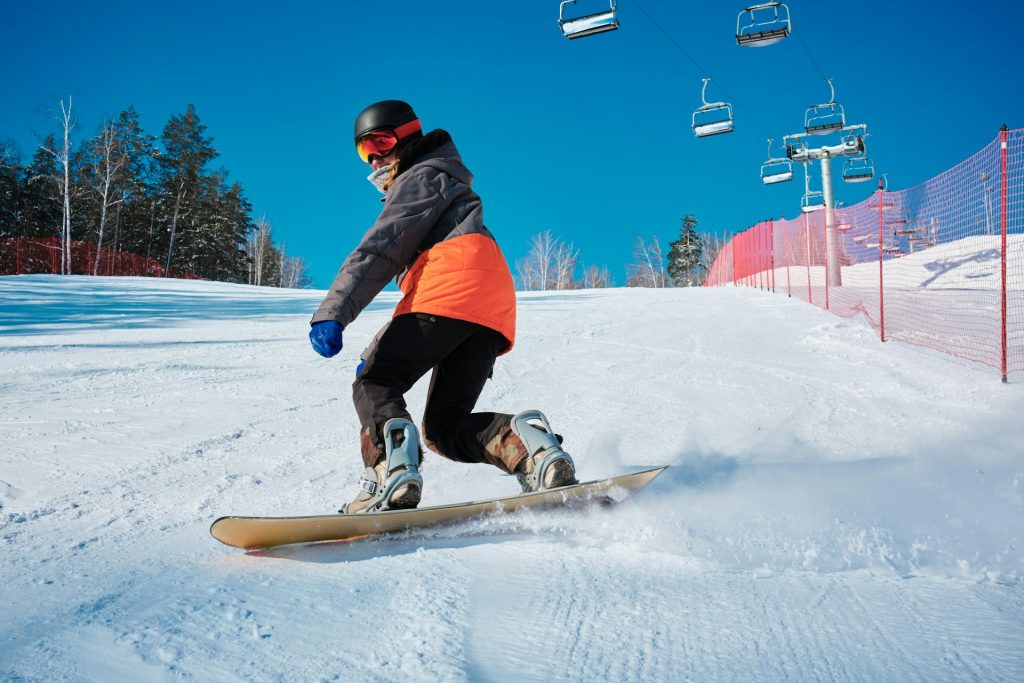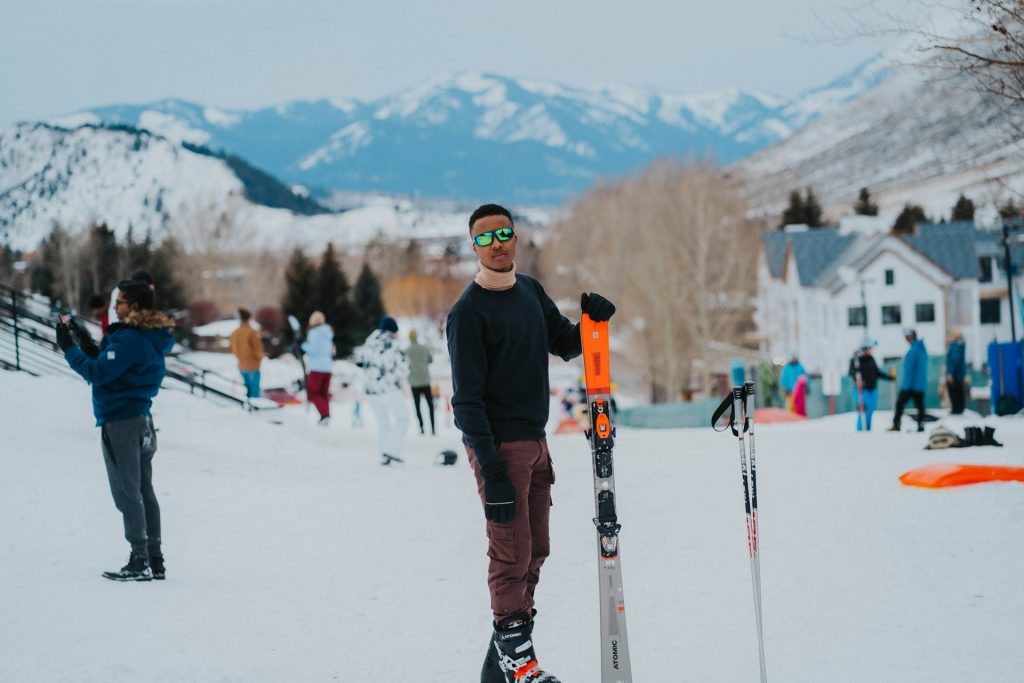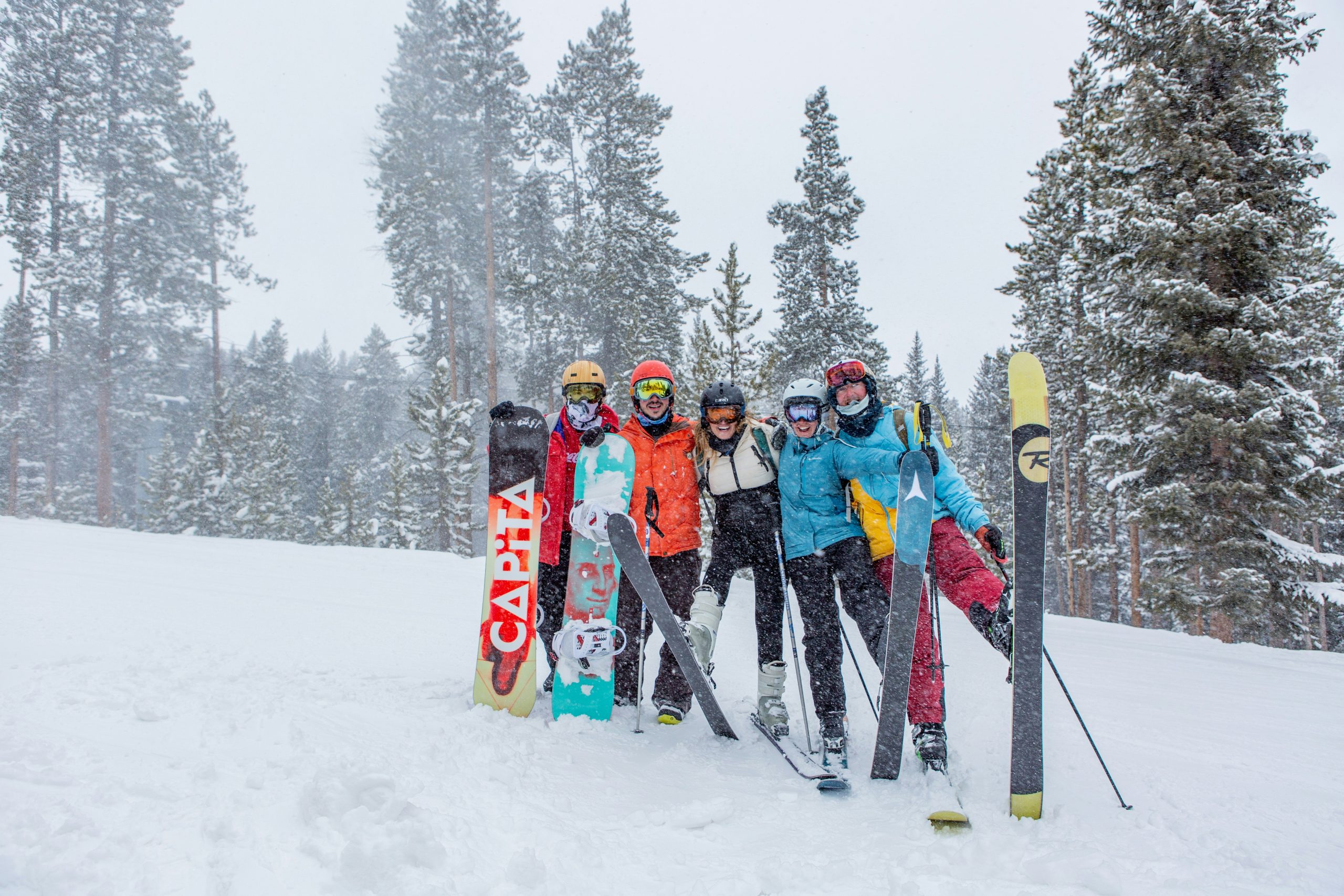Table of Contents
Packing for a ski trip requires careful planning to ensure you have all the necessary gear. Be prepared with the right winter clothing for active days and relaxing evenings from the slopes to the lodge. Essential items include warm and dry ski clothing, boot bags, and insurance cards. Ski packing is about comfort and safety, too.
Layering is essential for ski trip attire. The right combination of base, mid, and outer layers offers flexibility for changing weather. Accessories should complement your gear, like cold-weather gloves and socks. Being prepared for exhilarating runs, fireside conversations, and everything in between is key for a pleasurable ski trip.
Ski and Snowboard Essentials
Essential ski and snowboard gear includes a waterproof ski jacket and pants, warm winter layers, and non-cotton socks for staying dry and comfortable on the slopes.
Ski and Snowboard Essentials
Ski jackets and pants are essential for the slopes. A waterproof ski jacket and pants keep you dry and warm. Choose non-cotton layer tops and bottoms that wick moisture. Warm layers like socks, mittens, and a ski mask protect against the chill. Balance warmth with mobility for an enjoyable ski experience.
Skis/Snowboard and Bindings
Selecting the right skis or snowboard and bindings is crucial for performance and safety. Bindings should be adjusted to your weight and skill level to ensure they release when necessary, which is best done by professionals at a ski shop. The right equipment will enhance your experience and help you progress in the sport, whether you prefer the slopes or the park.
Boots
Ski boots are crucial for control and comfort while skiing or snowboarding. High-quality boots should fit snugly but comfortably, providing support without restricting circulation. It’s worth investing in a properly fitted pair, considering both the width and the volume.
Helmet
A helmet is essential for skiers and snowboarders. It must fit snugly on the head without gaps. Ventilation prevents overheating, and many helmets have adjustable vents. Look for safety certification to ensure your helmet meets impact protection standards.
Goggles and Sunglasses
Goggles protect your eyes from UV rays, wind, and snow. They should fit well with your helmet and provide a wide field of vision. Sunglasses are useful for sunny days or when you’re off the slopes. Choose ones with UV protection to safeguard your eyes against the sun’s glare, which is especially strong in snowy environments.
Base and Outer Layers

Layering starts with moisture-wicking base layers and is completed with insulated, waterproof outer layers to keep you warm and dry in snowy conditions.
Base Layers
Base layers are the foundation of your ski outfit. They should wick moisture away from the body, like merino wool or synthetic fabrics. A snug fit traps body heat and allows a full range of motion. Quality base layers are as crucial as outerwear for staying warm and dry on the mountain.
Mid Layers
Mid-layers add insulation and can be easily adjusted as temperatures change. Fleece or down jackets are popular for warmth without bulk, fitting comfortably under your outer layer without restricting movement. Consider a mid-layer with a zipper for easy temperature regulation.
Outer Layers
Outer layers protect you from wind, moisture, and cold. They should be waterproof and breathable, with features like sealed seams and venting zippers. A well-fitted outer layer allows for layering underneath and freedom of movement. Look for jackets and pants with adjustable cuffs.
Accessories and Extras
Don’t forget essential accessories like gloves, warm socks, and neck warmers to complete your ski outfit and stay comfortable in the cold.
Gloves and Mittens
Mittens are often warmer than gloves, providing a cozy space for your fingers to share warmth. Look for options with waterproof exteriors and insulated linings. The fit should allow for dexterity without being too tight, as proper circulation is key. Wrist straps or cuffs help keep snow out and mittens in place.
Neck Warmers and Balaclavas
Neck warmers and balaclavas provide crucial protection against the cold. They should fit comfortably without restricting breathing or movement and be made of materials that offer warmth while wicking away moisture. Options with adjustable toggles can ensure a snug fit for warmth.
Ski Socks
Warm socks are essential for comfort and warmth on the slopes. Look for merino wool socks for excellent insulation and moisture management. They should be tall enough to reach above your ski or snowboard boots to protect against chafing and cold.
Hand and Toe Warmers
Hand warmers are a powerful ally against the cold on the slopes. These portable heat sources can be slipped into gloves or boots, providing hours of warmth. They are essential for those particularly cold days or for those prone to getting cold easily. Always pack extra, as they can be a lifesaver during long chairlift rides or unexpected weather changes.
Spare Layers and Clothing
Packing non-cotton pants, a jacket, and extra socks ensures comfort and warmth on the slopes. Non-cotton materials wick away moisture and retain heat better. These layers allow quick changes in weather or getting wet. It’s better to have and not need than to need and not have.
Après-Ski and Beyond
Casual and Comfortable Clothing
When packing for a ski trip, bring casual clothes for off-slope activities. An insulated ski jacket, warm hat, and comfortable shoes will keep you warm while exploring mountain towns or dining at local eateries. These items offer style and practicality for any casual outing.
Swimwear for Hot Tubs or Saunas
Don’t forget to pack swimwear for hot tubs or saunas. In snowy mountains, trade snow boots for flip-flops to unwind in the steaming waters after skiing.
Slippers or Indoor Shoes
After a day in stiff ski boots, your feet will thank you for bringing along a pair of slippers or comfortable shoes. They’ll provide the comfort and warmth your feet need in your accommodation or a friend’s chalet.
Grooming and Personal Care
Skincare and Lip Balm
High-altitude air can be harsh on your skin, so skincare routines are crucial. Lip balm is indispensable, preventing chapped lips from wind and sun reflection off the snow. These items can make a significant difference in your comfort and skin health on the slopes.
Sunscreen and Lotion
Despite the freezing temperature, the reflective snow intensifies the sun’s rays, making sunscreen and lotion must-haves. Apply them generously to exposed skin to prevent sunburn and reduce the harsh mountain climate’s effects. This keeps your skin hydrated and protected from UV radiation.
Health and Safety: The Overlooked Essentials

First Aid Kits and Hygiene Products
A first aid kit with hygiene products is essential for any ski trip. Accidents can happen, and being prepared with bandages, antiseptic wipes, and pain relievers can turn a setback into a minor hiccup.
Sun Protection
Never underestimate the power of the sun, even in the coldest environments. Good sun protection is essential to shield your skin from harmful UV rays that cause sunburn. Apply high-SPF sunscreen and sun-protective lip balm to stay safe on the slopes.
Lip Balm and Moisturizers
Your best defense against the dry mountain air is lip balm and moisturizers. These products will soothe and protect your skin, preventing dryness, cracking, or irritation during your ski trip.
Luggage Solutions for a Hassle-Free Trip
Ski and Snowboard Bags
A padded bag is essential to protect your skis or snowboard during travel and keep your car clean from snow and mud. Ensure the bag is roomy enough to fit your poles and non-cotton jacket, as these should be kept close to your equipment to prevent misplacement.
Duffel or Wheeled Bags
For other belongings, a durable duffel or wheeled bag from a trusted brand offers ample space and easy transport. These bags can withstand travel and handle everything from boots to après-ski wardrobe. Consider a bag with separate compartments for wet and dry items to maintain gear condition.
Where to Ski: Swiss Ski Villas
Always dreamed of skiing in the Swiss Alps? Here are two villas in Switzerland’s ski country.
1. Chocolate and Charm

Experience an authentic alpine stay at this charming 18th-century chalet. The home accommodates six guests and offers stunning mountain views, a private balcony, and a wood stove.
Nestled in a picturesque hillside village, the chalet has been recently renovated. The spacious interior showcases floor-to-ceiling wood, vaulted ceilings, and an open-plan living area. Store your gear in the provided space and enjoy easy access to ski areas.
2. Moriarty’s Place

Discover Switzerland’s Sherlock country at this ski hideaway near the Meiringen-Hasliberg ski area. Moriarty’s Place accommodates six guests and is surrounded by Alpine beauty near the famous Reichenbach Falls (where Sherlock Holmes faked a fatal fall). Enjoy ski storage and a free shuttle to ski lifts. On-site amenities include a bar, bistro, children’s play area, and sauna.
Pro Packing Tips for a Ski Trip
1. Make a List and Check It Twice
List all your essentials, from skis and ski boots to your favorite beanie, and double-check to ensure nothing is forgotten. This not only ensures you pack everything you need but also helps you prioritize items that can be rented or bought at the destination if necessary.
2. Use Packing Cubes for Organization
Packing cubes are invaluable for organization. They help you categorize and find items without rummaging through your bag. You can designate cubes for base layers, mid-layers, and accessories, making unpacking easy upon arrival.
3. Layer Like a Pro
When packing for ski towns, layering is key. Start with moisture-wicking base layers, add insulating mid-layers, and top with a waterproof and windproof shell. Don’t forget to include a fair isle sweater and a puffer jacket for cozy evenings after skiing.
4. Pack for All Weather Conditions
Mountain weather is unpredictable, so prepare for everything. Pack extra gloves, ski socks, layers, helmet, and goggles. Conditions can change fast, so your packing list should cover all weather situations.
5. Check Baggage Weight Restrictions
Weigh your bags before heading to the airport to meet airline restrictions. Overweight baggage can incur hefty fees, cutting into your trip budget. Distribute your gear evenly, and consider wearing your heaviest boots and jacket to save space and weight in your luggage.
6. Carry-On Essentials
Pack important documents, medications, and a change of clothes for your carry-on, especially for ski trips to places like Park City, where a missing bag could mean missed slope time. Keep ski resort contact info handy for emergencies.
Frequently Asked Questions
1. Can I rent all my ski gear at the resort?
Most resorts offer rentals for ski gear, including skis, poles, and snowboard boots, as well as boot bags, ski bags, and other accessories. Consider bringing personal items that require a proper fit, such as snowboard boots and ski poles, for comfort and performance, even though you can rent essentials like ski boots or snowboard gear.
2. Eco-friendly packing practices for ski trips
Pack eco-friendly by using reusable boot bags instead of disposable plastic bags. Borrow or rent gear to minimize waste and opt for sustainable materials. Purchasing high-quality items that last longer reduces the need for frequent replacements, contributing to a greener ski experience.
3. What should I do if I forget something important?
If you forget something like a bathing suit, don’t panic. Most ski resorts have shops where you can buy or rent what you need. Check with your accommodation, as they often have spare items for guests or can direct you to the nearest store.
Wrapping Up Your Ski Trip Packing Plan
As you finalize your ski vacation packing, ensure every item on your checklist is accounted for. Double-check the waterproof rating on your outer layer to stay dry in the snow. Remember, the right ski clothes make all the difference. Secure lift tickets in advance to avoid hassle, and pack your ski equipment carefully to prevent damage during transit.
Health and safety are important, so pack a first aid kit with supplies and personal medications. Bring a face mask for crowded resort areas. Being prepared with essentials will ensure a stress-free experience on the slope,s whether skiing or snowboarding.



